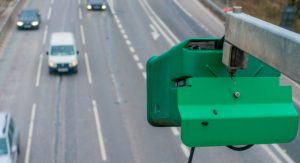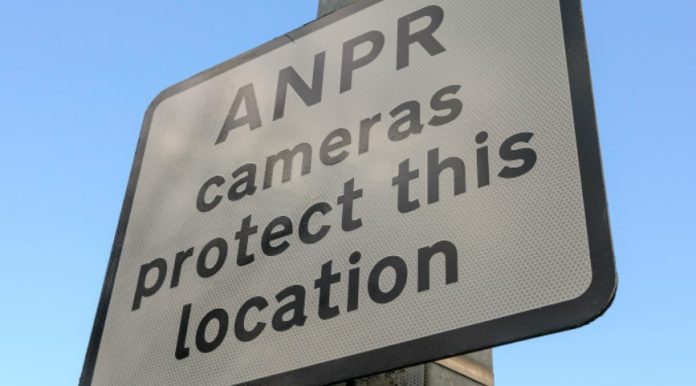Table of Contents
Automatic Number Plate Recognition (ANPR) began as a security tool. It then made its way into commercial parking. Now it’s moving into the mainstream as businesses seek to improve their security without incurring excessive costs or inconvenience.
Here is a quick guide to what you need to know about using ANPR for general traffic management.
A step-by-step guide to ANPR for barriers
It’s important to understand how ANPR for barriers works so that you can make an informed decision on whether or not it is the right option for you. Here are the basic steps and the equipment required to make them happen.
A vehicle drives towards a camera and has its number plate scanned
For this to happen, you need to be able to position cameras where they can accurately capture details from oncoming vehicles. Ideally, the cameras should be far enough ahead of the barrier they control to allow permitted vehicles to proceed without needing to stop. There also needs to be enough light for the cameras to function regardless of the weather or time.
Installing digital tool like cameras for ANPR creates essentially the same considerations as installing cameras for CCTV. ANPR data is considered personal data and therefore is subject to all relevant data protection laws including General Data Protection Regulation(GDPR). For practical purposes, this means that all ANPR for barriers implementations must fulfil two key points.
Firstly, they must be entirely on private property. Theoretically, you could ask for permission to scan number plates on the public highway. In practice, it’s in the highest degree unlikely that this permission would be granted. Secondly, you’d have to store the data securely and delete it promptly. This is a best practice in any case.
The number is checked against a database
Per the first point, ideally, this should happen quickly enough for permitted vehicles to be able to proceed without stopping. If there is a delay, it should be minimal. This means firstly, you need to have an internet connection that can transmit data at speed. Secondly, you need to have a database that can be queried at speed.

With the current state of technology, neither of these points should be a major issue. If, however, you’re planning on using Zigbee or WiFi (or mobile data), you’ll need to make sure it’s up to the task regardless of the atmospheric conditions. Also, no matter what type of connection you use, you’ll need to ensure it’s protected from weather, wildlife, and humans.
The database sends an instruction to a barrier
If a vehicle is on the permitted list, the barrier will be raised. If it’s not, then the vehicle will need to be processed in some other way. All ANPR systems are going to have some vehicles which are denied access to the area. Most of these refusals will be correct. Some will be in error. It’s important to have a process for dealing effectively with both.
Realistically, that means you need to have a space for vehicles to turn away from the barrier. They then need to be able to re-join the public highway or park up and wait for alternative processing. In some situations, this may mean going and buying a parking ticket. In other situations, it may mean summoning a human to resolve the situation.
Dealing with ANPR declines
There are three main reasons for ANPR declines. The first is that a driver turns up at the wrong place. The second is drivers turning up at the right place but without the right credentials. The third is the ANPR system misreading the vehicle’s licence plate. This is usually because it has dirt or debris on it that obscures the number.

In the first instance, drivers will usually resolve the situation themselves. They just need space to turn and a route back onto the public highway. In the second and third cases, human intervention will be needed. Therefore it’s preferable to use ANPR systems in combination with Closed-circuit television , intercoms, and barriers that can also be worked remotely.
The practicalities of ANPR for barriers
Given everything required to implement ANPR for barriers, you need a certain level of traffic to justify it. How much traffic you require depends on how you want to use it. If you’re using it for just traffic management or just security, then you need a higher volume of traffic than if you’re using it for both.
A good rule of thumb for assessing whether or not you have enough traffic to justify ANPR for barriers is to look at your staff’s current workload. If they’re managing their workload comfortably, then you can probably manage without ANPR for barriers right now. You may, however, want to look at options for financing it in the future if their workload grows.
If, however, your staff are already near or at capacity, then it could make a lot of financial and practical sense to look at ANPR as an alternative to scaling up your team. Here are a few of the main causes for this.
ANPR works 24/7/365

Even before COVID-19, dealing with staff absences was often a major pain for managers. The less spare capacity there is in a team, the harder it becomes. ANPR is always ready for work.
ANPR is more efficient than humans
Computers are great for repetitive tasks which humans find boring. Reading number plates is exactly that kind of task. Even the hardest-working and most focused of humans are likely to struggle to read number plates for extended periods without making any errors. Both human and machine work has their own pros and cons.
ANPR has close to 100% accuracy all the time. What’s more, when ANPR does misread plates, it tends to be for reasons that would probably also catch out humans. For example, there may be insufficient light on the plate, or it may be covered in dirt or debris.
As yet, ANPR isn’t perfect but it’s a lot more efficient to have humans overseeing ANPR than to have humans working without it.
ANPR can provide useful analytics
The data collated by ANPR could be used to manage the efficiency of your parking space. For example, if you detect that significant numbers of vehicles are coming in at certain times, you could look for ways to spread the traffic more evenly.


